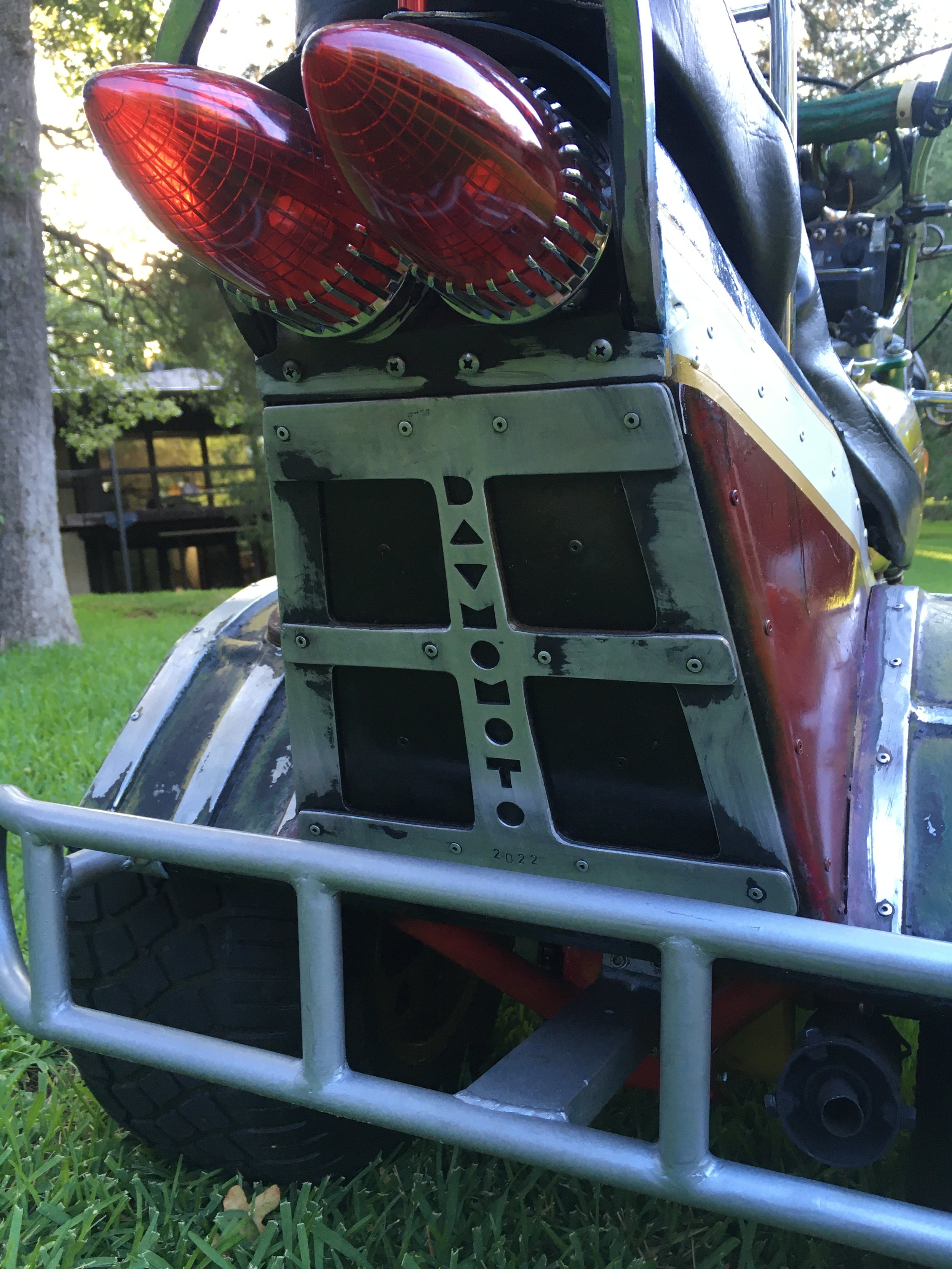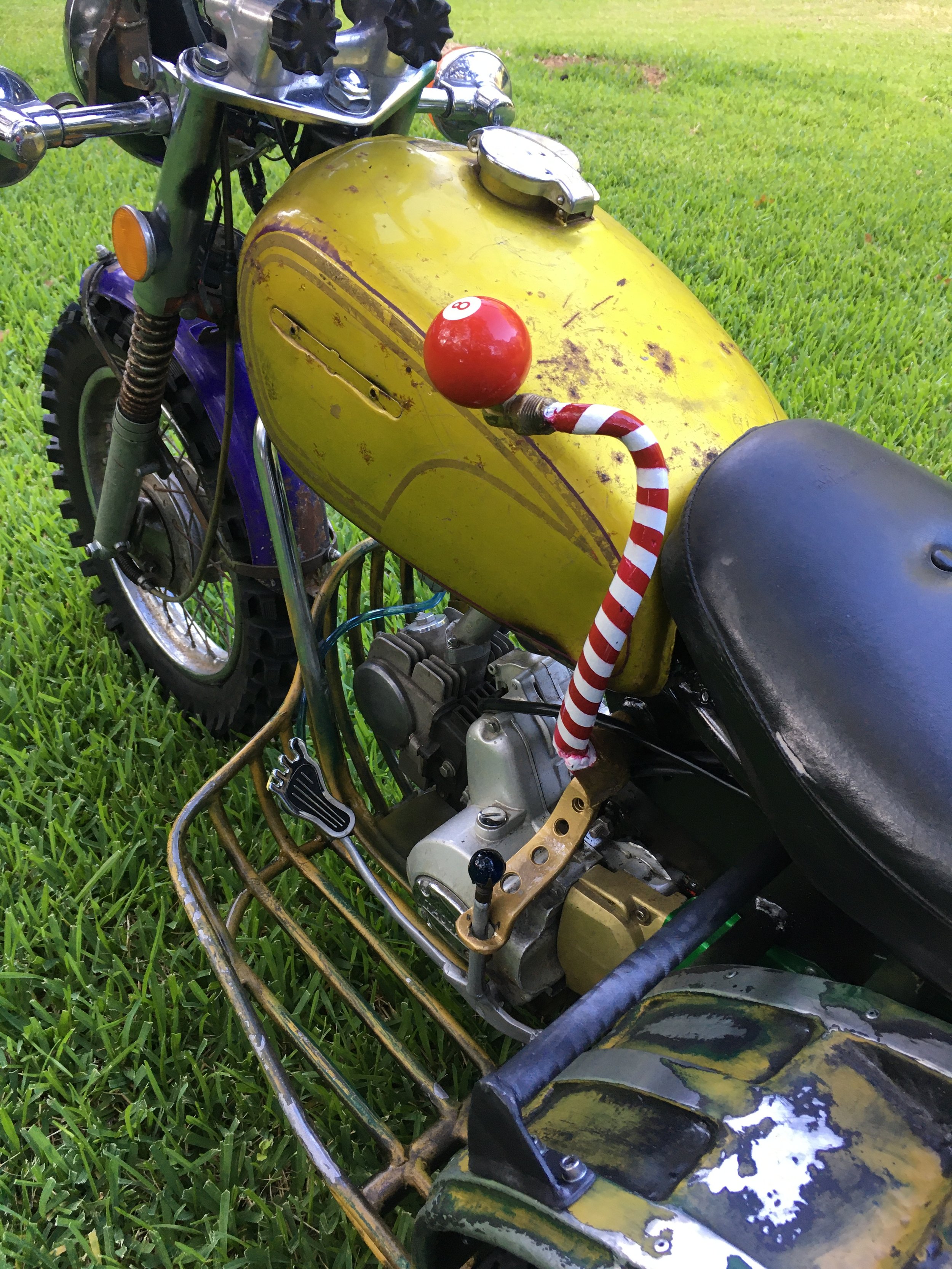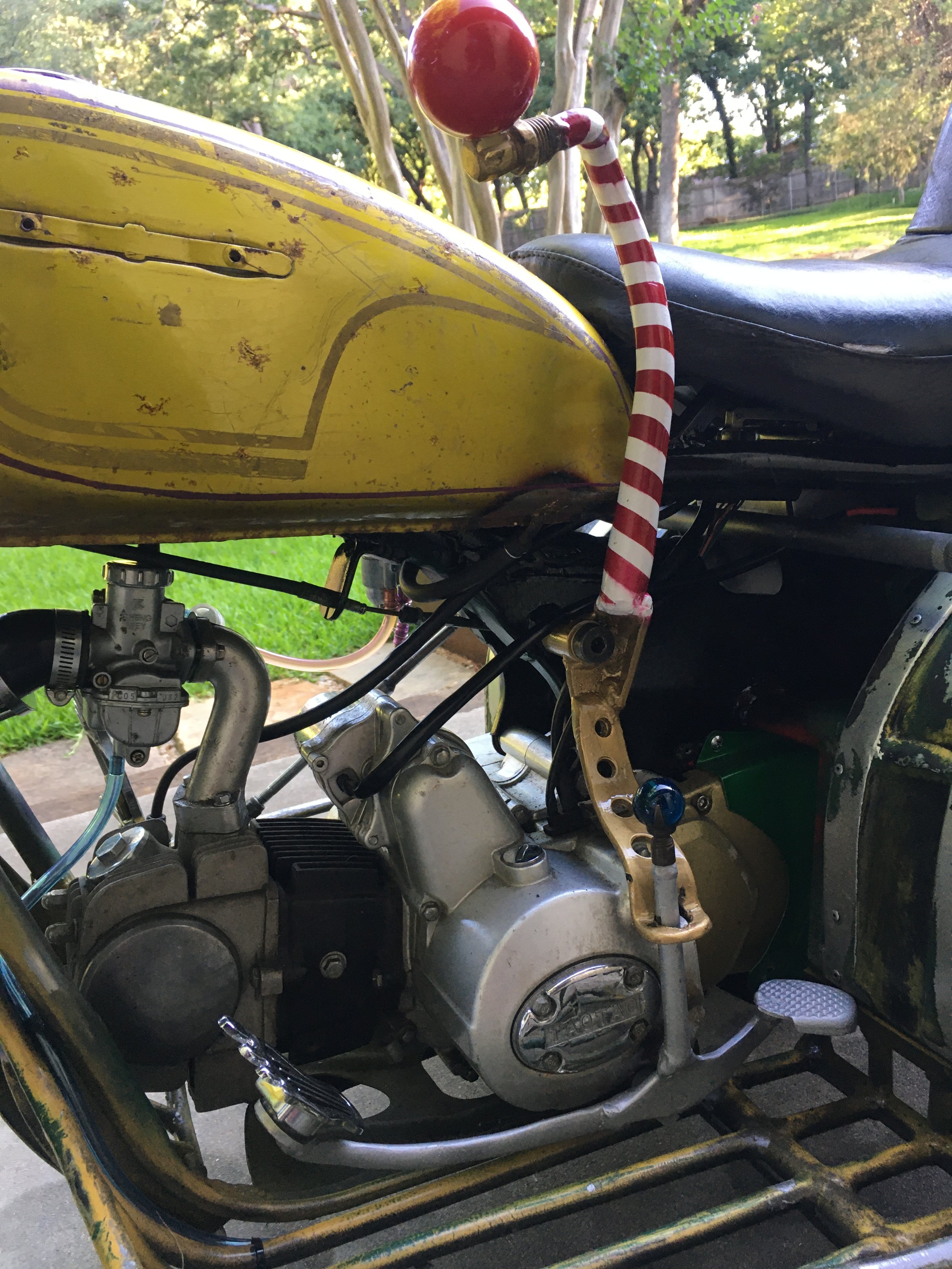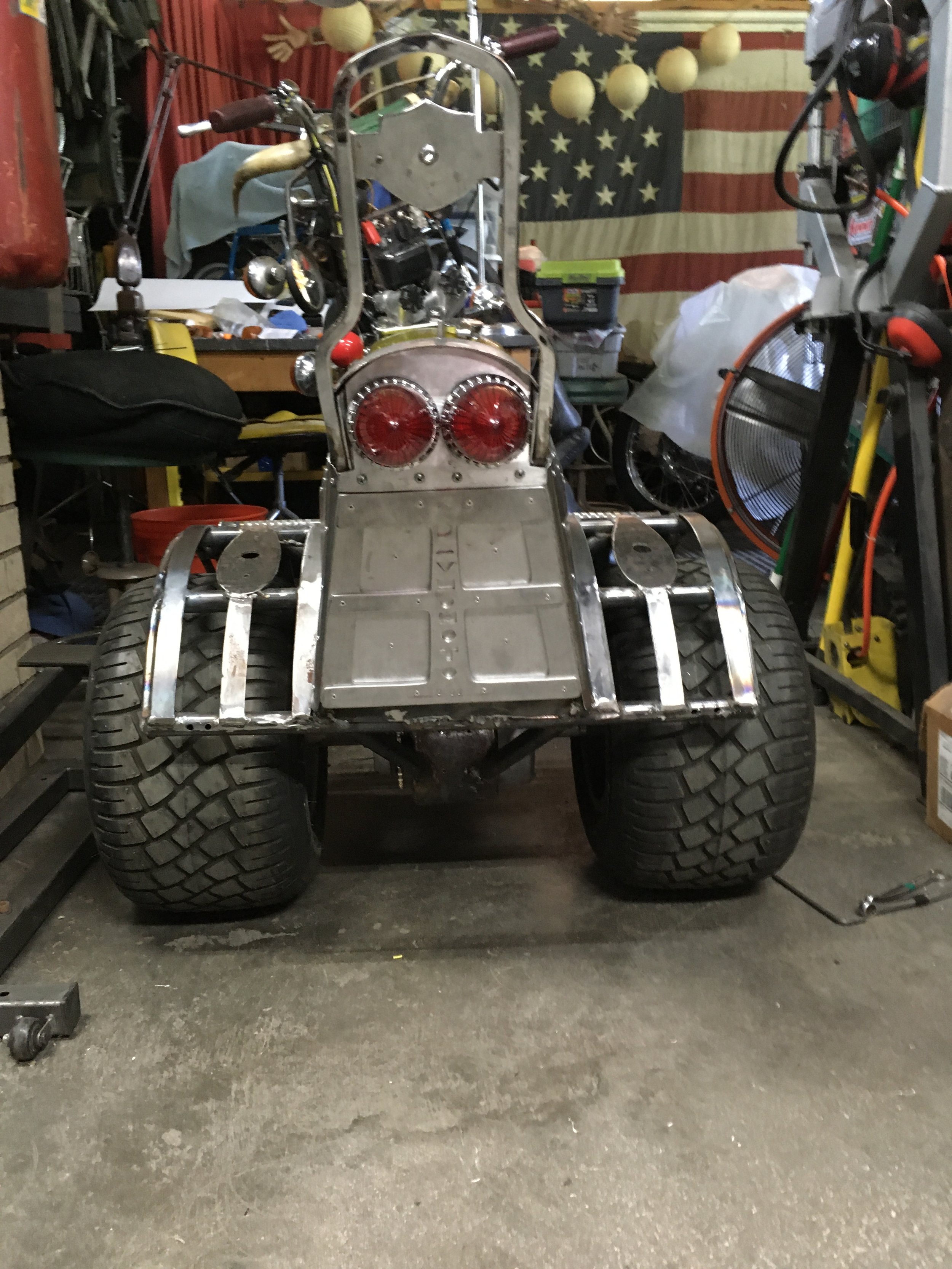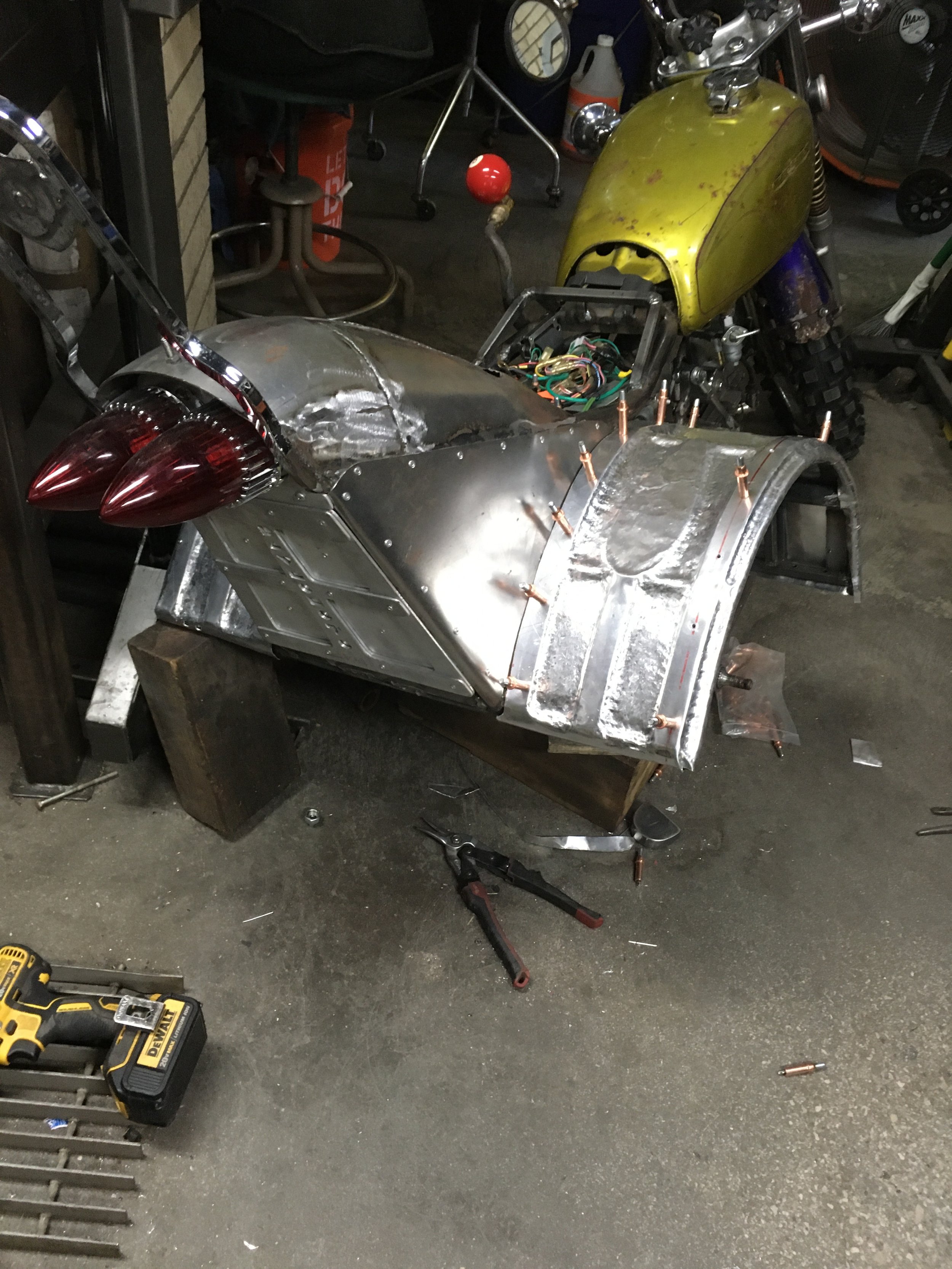Here she is, after over ten years of sitting around the shop, finally running, and complete, save a few mostly cosmetic details.
With the knobby front tire, she tracks well in dirt, gravel ,or grass, but needs some serious counter-weighting to turn sharply on pavement.
There are styling cues from 1959 Cadillacs to dune buggies, rockets, and midget racers, to name a few. Frames from two Honda ATC70’s, front fork tubes from a honda MR50, triple tree clamps from a CT70, Harley bitch bar, Bates sissybar, headlight and turn signals from a CB750, Kawasaki KLX110 muffler and KZ400 turn signals, Mustang King/Queen seat, CL350 tank, CT90 skidplate, SL70 front wheel, custom wheels made from Z50 and ATC70 wheel halves, shifter made from a mangled Z50 brake pedal. Yeah, there are parts from a bunch of different bikes in there.
The aluminum rear panel with my old logo. The logo was used on the CT117 custom bike in 2010, and not since. The panel conceals a lunch-box size fold-out bin. The actual panel came from the sides of an old ultrasound machine I used to push around a hospital in my other career. As a kid, I saw bumpers on dune buggies, midget racers, and vans like this one. Always wanted to do one on my 1963 Econoline van, but sixteen year old me didn’t have the skills yet. This one is made from tube steel, with the cross pieces brass brazed in for a cleaner look.
The rear bin is spring loaded, and will retract tightly.
Because the bike is for holiday parades like Christmas, a little candy cane is not totally out of place. I was thinking more “The Cat In The Hat” or 1980’s Memphis styling when I did it. At the bottom right, the recesses for the foot rest and the footpeg cross-bar can be seen. They are either for the “Queen seat” rider, or the driver can also stand on them.
A vintage Cal-Custom barefoot accelerator cover is used for the rear brake. There is also a hand lever for the rear brake on the left handlebar. The fender lights were a Pate Swap Meet find a few years back. I was told they came off the cab of an old Packard or Studebaker truck. They have glass lenses and LED bulbs.
1959 Cadillac tail lights have always been evocative of rocket or jet flames. These repops look right at home under the seat. The metal under the seat is from a left over section of a Harley rear fender for the 1993 FXR custom build. Since the rear part of the seat is arched to fit on a fender, it seemed appropriate. A Takegawa brake nut secures the seat.
Ready for take-off! The red, white and blue with gold accents was done quickly with rattle cans, as was the rest of the bike. There is a look I love, of hard driven race cars, painted just well enough to cover last weeks damage, and look good from twenty feet. The cars I am thinking of are beater circle-burners and midget racers, driven by week-end warriors and semi-pros on the local town track. The kind of tracks that have mostly disappeared, but were plentiful in the sixties and seventies, when I was a kid. The multi layer paint, front skid plate, and rear bumper were all a nod to that style.
A digital gear indicator is a great thin to have when there is a reverse gear. There are also covered switches for the electric start button and still to be installed ground effects.
The front forks were lengthened a little over two inches, and Z50 rear shock springs were used for the external springs. There are inner springs only in the original CT70 forks, but the additional weight meant a little more spring is needed.
The bike can be shifted by foot or the suicide shifter. A mini Cal-Custom style barefoot pedal is on the front end, with the foot tread removed from the Z50 brake pedal used for the shifter. No waste around here!
The underneath structure of the fenders can be seen here. Originally, I had planned to use some beaded aluminum fenders laid on top of this structure, but I only had some .030 thickness, which is too thin to support much weight. With the probability these fenders would be stepped on, a new plan that did not involve buying thicker metal was figured out. It would have been much easier to buy the metal, but I have found improvisation makes a chance for some growth, and forces you to go outside your box. The rear aluminum panel was made from two layers of .125 aluminum plate( harvested from an old medical ultrasound machine,) and a layer of .090 on the bottom layer. The rectangles were made to go with the fender indentations.
The left fender is partially pounded, and the right one has Clequos holding it together. First curved on a Jet tools slip roller, and then an assortment of wood, plastic, and steel hammers and dollies were used to form the fender indents.
After the first round of pounding, additional rounds were performed to smooth and equal out each sides. The thinness is the aluminum makes it easy to bust through, so it has to be moved gently.
The first two plates of the rear panel.


